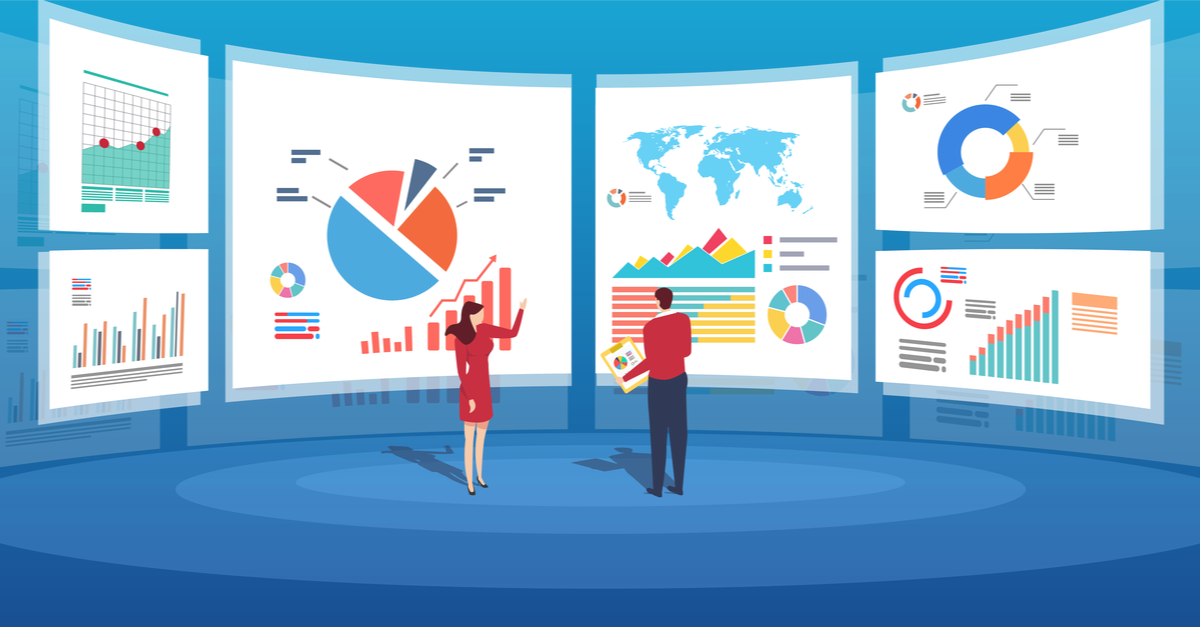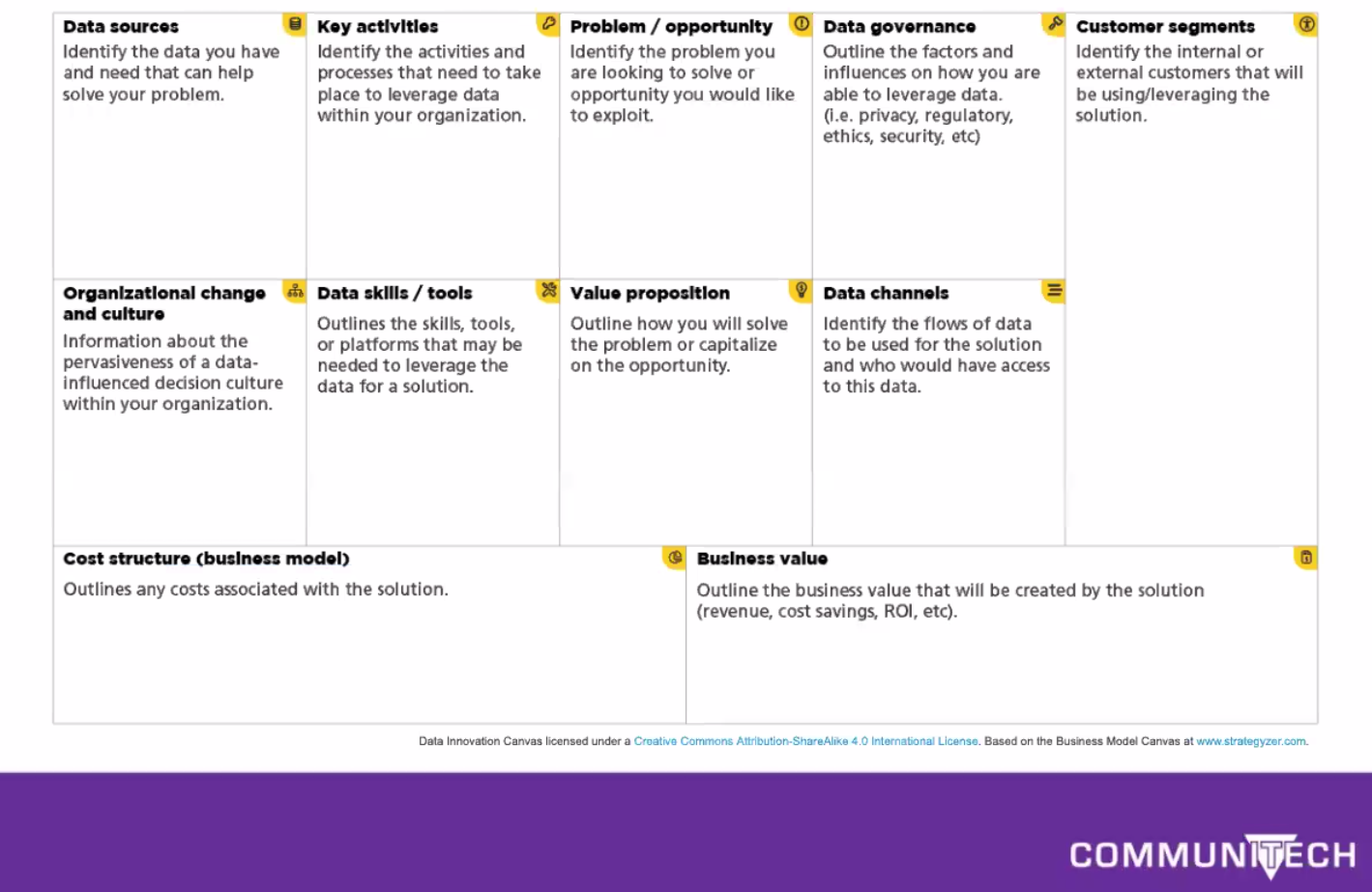The secret for long term-growth - or why data is the new oil
Martin Magdinier | 09 July 2020

Data is the new oil. It stands at the center of an organization’s value proposition, at the core of their product or service creation process. Understanding and managing data is a core competency and not a by-product.
COMPANIES THAT ARE LEADERS IN THE USE OF DATA ARE THREE TIMES MORE LIKELY TO BE FINANCIALLY SUCCESSFUL. source: Economic Intelligence Unit
It’s estimated that 40,000 more exabytes of data is either created, replicated, or consumed annually in 2020 compared to 1,200 in 2010. And this increase is happening in almost every industry. Organizations must then learn to exploit and refine data if they want to grow. And to do so, they need to understand how their data strategy evolves at every step of their customer journey and product life cycle. They need their employees to understand how to use, read, understand, and interpret data. And they need to know how to build products and services that are driven by data.
With data, your organization can create products or services that directly help customers. Your offer can take the form of tools (API, data feeds, recommendation engine, etc.) or knowledge and insights (thanks to advanced analytics). But ultimately, data still needs to be at the center of your organization’s business strategy. And the same way the Business Model Canvas is supposed to help organizations develop their business model, Communitech created the Data Innovation Canvas to help organizations develop a data model.

So you can now start fuelling your organization with data for better growth.
INVEST IN YOUR FUTURE
We all start from an empty (or nearly empty) data store. Building a data strategy is the key to slowly assemble all the data you need, in a structured, efficient, ethical, legal, and reliable way. As you fill up your data warehouse, you can slowly define how your product or your service will incorporate data, and how you can leverage data over time to continually improve your offer.
It’s a compound interest. The longer you invest in your data, i.e. collect, aggregate, enrich, and analyze them, the more value you gain. Over time, you build historical information on specific elements of your service, product, and customer base, that will improve your analysis and allow you to gain new insights. Later down the road, your historical information will help you create better data initiatives. Essentially, you’re being paid off by your own work. You’re making interests over your interests.
Start now. Because this history is built over your doing, your innovations, and your products and services, it’s entirely exclusive to you and impossible to reproduce. Yes, it’ll take time. You might not be able to use data to address current challenges. The goal is more in the long term: How can you leverage data that improve over time? The only way to do so is by thinking two or three steps ahead to set the right goals.
Keep in mind that the more data you collect, the more accurate you’ll be. But the more accurate you’ll be, the more changes you’ll need to make to your products, services, and workflows to incorporate data in your operations.
Data is the new oil, but it’s not sufficient to fill the tank of your machine once and leave for a year. During your data journey, you’ll rethink how to use that fuel efficiently. You will also see new opportunities and new destinations to reach with a bus filled with happy and empowered customers.
FIND THE PERFECT PRODUCT/SERVICE MARKET FIT
 Once you’ve filled your Data Innovation Canvas, you’ll be ready to build a data-driven business model. In other words, your business model will define what role data will play in the growth of your organization and how it will adapt to data changes.
Once you’ve filled your Data Innovation Canvas, you’ll be ready to build a data-driven business model. In other words, your business model will define what role data will play in the growth of your organization and how it will adapt to data changes.
Adaptability is the keyword here. Our world is moving fast, and that’s already an understatement. An organization that accepts to harness the power of data must also be ready to adapt to its many changes and variations. You should also take into consideration your organization’s learning curve when working with data. Mainly:
-
Your business plan should consider all possible ways of presenting data and their potential impact on your revenue model and targeted segments. One dataset, for example, could be used simultaneously to feed different initiatives.
-
Data changes all the time. It’s constantly being updated, transformed, erased, combined, added, etc. You need to consider the possible change in your data sources overtime, and how it’ll affect your organization and its capacity to deliver its products and services. If you use external data, you need to make sure your architecture is strong and flexible enough to handle unpredictable changes.
-
Data is not confined to one department. It can, and should, be used by different teams for different applications. The more you use your data, the most reliable it becomes, and the more you find ways to use it!
-
Data shouldn’t be complex. You don’t need to create the next artificial intelligence unicorn. Start with a narrow scope and explore the real use case for it. If you make it easy to explain, you’ll help increase the transparency of your activities for your users and stakeholders, and thus gain their trust. And this will show to be a lot more efficient than diving headfirst into complex cross-analysis, especially if it’s not needed.
-
Your customers change all the time too. And their expectations of your organization change also. Keep an eye out where the industry is going.
With a business model based on data, and most importantly based on the volatile nature of data, you multiply your chances of finding the perfect product/service market fit. Instead of relying on time-sensitive market analysis, your growth will be rooted in a deep understanding of your data and different user experience iteration. You’ll drive that bus full of customers not only with the right fuel but, most importantly, in the right direction.
TAKE AWAY
Now you know: collecting data and learning how to use it is your next big move. But it’s never that easy, isn’t it? There is such a thing as bad data. Before you throw yourself in juicy datasets, make sure you ask yourself the 10 essential questions to make sure you’re feeding your organization with relevant data from reliable sources. It’ll also help you make sure the data you’re collecting is usable for your organization, or that you have the required abilities to clean it. And once you’ve clearly defined your source, don’t forget to plan ahead: how will you use these different sources? Can you cross analyze to derive new insights?
Collecting, cleaning, and analyzing data are not easy (or cheap) tasks. You need to set the right expectations, or you risk drowning is tasks you hadn’t planned for, driving a bus that’s missing critical pieces of mechanics. It might be easier to start off with data that’s naturally closer to your needs as to limit the cleansing and preparation needed. And then, slowly, as your organization grows, you can improve your data granularity (the level of detail) or linkage (how it relates to other information).
The secret is investing in your infrastructure. Build data foundations from the start, from engineering, based on a solid Data Canvas. Build foundations that will last while you iterate on the front end and insight delivery. Give yourself enough space to package data differently, according to your users.
You’ll find all sorts of “ready to buy” datasets out there. But the datasets that matter are the ones you build. So, start collecting data early to build historical information. Because one thing you’ll never be able to buy back is time.
We have the experts to make it happen.
